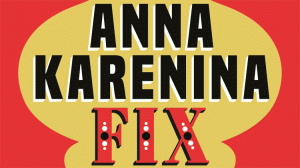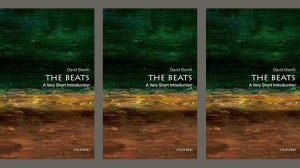Funny Weather by Olivia Laing / Picador / 368 pages / 2020
 It feels as though we are living in an alternate timeline. Sometime in 2016, we entered a parallel version of history and have not since reemerged.
It feels as though we are living in an alternate timeline. Sometime in 2016, we entered a parallel version of history and have not since reemerged.
Olivia Laing’s latest book, Funny Weather: Art in An Emergency, collects essays, articles, reviews and interviews which span this crucial period—although some of the essays date as far back as 2011. The central section of the book, also titled “Funny Weather,” collects Laing’s column of the same name from the international art magazine Frieze. Starting in 2015, covering the beginnings of the global refugee crisis with reference to David Wojnarowicz’s piece “A Fire in My Belly,” the column seems ready made for the next five years of political turmoil, though it cannot have felt that way in the making. Each essay is more despondent than the last as each event of the last few years seems to go invariably wrong.
A piece titled “You Are Welcome” seems to mark the beginning of this alternate timeline:
“16 June 2016: a bad day. In the morning I saw a video on Twitter of British football fans throwing coins at refugee children in the streets of lille, followed by a photograph of Nigel Farage posing against a hoarding showing a long line of Syrian refugees, walking away from a war zone, walking heads bowed through foreigen fields. A few hours later, an MP was shot dead outside a library with a home-made gun. That same week in America, forty-nine people were murdered at Pulse, a queer club in Orlando. On the campaign trail, Trump compared immigrants to snakes. At his rally in Greensboro a journalist overheard: ‘Immigrants aren’t people, honey.’
Like you, maybe, I’m trying to make sense of this summer.”
It felt like all of us were. The leave campaign won the UK’s Brexit referendum, an MP was murdered, there were multiple mass shootings in the States, a demagogue was running for president. Coming out of the Obama era, there was a general sense of hopefulness. A way in which it felt that things couldn’t go that badly wrong. Then at the end of 2016, the demagogue won. The first time she mentions this it is more personal than political: “After the American election, I fell asleep each night packing a bag in my mind.”
I was working at a bookshop at the time, and it was not long after that 1984 returned to the top of the bestseller lists—and actually sold out. There was a sense of panic. The day the election was called, most of my coworkers resorted to making jokes, but ones tinged with fear: uncertain how to respond to a crisis.
This is the same question that Laing tries to address in Funny Weather. In her June 2017 piece, she directly asks the central question that seems to have been informing her Frieze column so far: “What’s the relationship between art and disaster?” Grenfell Tower, a block of flats in London’s North Kensington, had burned to the ground killing over seventy people. The fire spread rapidly due to a kind of combustible cladding used on the building’s exterior, which was probably used as a cost-cutting measure.
Even then, it is still strange to think that we still didn’t know how crucial that question would become. Still to come were the Kavanaugh hearings, the white supremacist marches in Charlottesville, two more snap elections in the UK, and the 2018 IPCC report that the world had twelve years to stop disastrous levels of global warming. Another book published recently, Weather by Jenny Offill, speaks to the feeling that you’re living through end times. The novel’s narrator does not live in a climate-fiction future. She lives in the present. Yet she becomes obsessed with doomsday prepping, and it doesn’t seem especially unwarranted. Laing’s 2018 novel Crudo, set during the summer of 2017, was published with the tagline a “raw account of love in the apocalypse”, a sentiment that was recently referenced by songwriter Phoebe Bridgers while talking to BBC’s Radio 6 Music about her upcoming sophomore record, Punisher: “The new album is about the apocalypse. And having a personal life while the apocalypse is happening.” Funny Weather would be published 16th of April 2020 in the midst of another US election campaign—at least that part was, mostly, predictable—an economic collapse, and a global pandemic which has left much of the world self-isolating, causing almost 300,000 deaths at the time of writing, with the US and the UK bearing some of the heaviest death tolls.
This might make it sound like the collection is heavy reading. But it isn’t, really. These events inform her essays as both starting points and context. But the essays are about art, first and foremost. Laing takes the work and biographies of various artists and uses them as reference points in addressing more overarching themes. Each chapter of her previous book of nonfiction, The Lonely City, followed an individual artist — including Warhol, David Wojnarowicz, Edward Hopper — in order to tease out the relationships between loneliness and the modern world. But her writing is also, almost always, autobiographical. Her first book, To The River, is about Virginia Woolf and the River Ouse, but it’s also about a specific time in Olivia Laing’s own life. Merging politics, art criticism and memoir ends up being a particularly flexible style but also a very cathartic one. Her books are relaxing to read. They guide you through big ideas in a generous way. They can be academic and heavy with ideas, but because of her style, they feel much lighter.
“Here’s the first challenge,” Laing writes in an essay titled “The Fire This Time,” “how not to aestheticise a tragedy.” In a later essay, however, she quotes the French novelist Édouard Louis: “I think it would be indecent these days for writers to talk of anything else but violence.” There’s a fine line between representation and transformation. There is not one answer to this problem, which is why Olivia Laing does not write about just one artist in her Frieze columns. Art “is a training ground for possibility […] and it offers other ways of living.”
Many of the writers and artists that Laing discusses in Funny Weather and her previous work almost certainly thought they were living through the apocalypse. David Wojnarowicz and Derek Jarman died in another worldwide epidemic: the HIV/AIDs plague. Virginia Woolf wrote Between the Acts at the beginning of the Second World War as “an attempt to situate what Woolf feared might be an end of civilisation itself.” Virginia Woolf committed suicide before the war ended. For these artists, it really was the end of the world. It was the end of their world, anyway.
It is hard to know if this is comforting or not. “Continuation is a comfort,” Laing writes; “life of some sort is surely assured.” But not all life is assured. Not everything continues. But for Laing, some forms of art situate us in “deep time”: a longer view of the future and the past. Writing on Derek Jarman’s garden, she asks “Is art resistance? Can you plant a garden to stop a war? It depends how you think about time. It depends what you think a seed does, if it’s tossed into fertile soil.”
After the Frieze columns, the rest of Funny Weather consists of various different forms of artist profiles split into sections titled “Artists’ Lives”, “Four Women” and “Love Letters”, although the section of criticism, titled “Reading”, frequently leans on writer’s biographical lives, too. In the first, Laing takes us through the lives of artists such as Basquiat, Hockney, Wojnarowicz, Jarman and O’Keeffe. The essays on Jarman and Wojnarowicz were written as introductions to reprints of their memoirs and diaries — Modern Nature and Close to Knives, respectively. Many of the others were written to coincide with major retrospectives of the artists’ works, often at the Tate. While interesting, these essays, removed from their context, are less powerful than when they are utilised within long-form work. But their value is also in bringing readers to artists. Reminding them of the importance of their art and the context within which that art happened — often forgotten when appreciating work in a gallery or museum.
These sections are naturally less cohesive than the Frieze columns. They were written about different artists at different times and for different purposes. They lack the sense of thematic thread that runs through her other books. But reading them reminded me of how these more disparate essays led me to new discoveries. I read Wojnarowicz’s memoir Close to the Knives after hearing that Olivia Laing had written the introduction to its reprint. The Lonely City opened up a world of queer writers and artists that I had not known about beforehand.
She often writes about artists that are before their time, or more radical than their time allowed—even too radical for today. This is not to say that these artists are unknown, but Laing’s careful attention to their work brings them back to the surface and reminds us why they are important. Laing had been writing about Wojnarowicz and Close to the Knives long before it returned to print and she takes pains to remind us how radical his work still is and how little are attitudes to AIDS have changed. The same goes for Freddie Mercury, one of the addressees of Laing’s section titled “Love Letters”. He never went underappreciated, of course, but Laing argues that he still represents something considered radical and taboo even today: “In 2018, the Mail published a piece that talked about Freddie’s ‘unshakeable bond’ with an ex-girlfriend. The language was poisonously familiar: ‘indiscretions … bedded hundreds of people … Freddie took advantage of the endless supply of men.’ It’s still seething under the surface, the belief that AIDS is a punishment.”
The same goes for her criticism. Laing often takes pains to draw attention to writers whose writing is underappreciated in their own time, or whose writing the literary world is still catching up with. One of the most interesting reviews in Funny Weather is Laing’s 2015 review of Maggie Nelson’s The Argonauts: “If you haven’t heard of her, it’s because she’s yet to be published in the UK, from which one might conclude that British publishing is becoming too timid for its good.” Thankfully, Nelson has since been published in the UK. However, most of Maggie Nelson’s books only became available to buy from UK bookstores a decade or more after publication. The Argonauts was thankfully published by the UK arm of Melville House in 2016. Bluets took eight years to appear in anything other than a US import. Jane: A Murder, along with Nelson’s other early poetry collections, only appeared in the UK in 2019, closing in on a decade and a half since they appeared in the US. For Laing, Nelson’s work possesses “a facility for making room, for offering up possibilities beyond the either/or, the this and that.”
The same is true of Ali Smith. In Laing’s profile she explores how Smith offers up new possibilities for a more urgent literary form: “Maybe an accelerated news cycle requires accelerated art. A manuscript usually takes a good year to be birthed into the world as a book, but Autumn sped through the presses in a matter of weeks.” Laing’s 2018 novel Crudo took a similar path. At a talk I attended not long after, Laing credited Ali Smith as having made this possible for her. Because Smith had managed to persuade her publishers to push out Autumn and the rest of the Seasonal Quartet so quickly after receiving the manuscripts, it opened up the possibility for Laing to do the same with Crudo. This can affect all of us, not just published novelists. We can reimagine the pace of art. That art and literature can be truly current, not after-the-fact or confined to always looking at the world from the safety of the future. That the speed and urgency of social media is not necessarily the antithesis of real art.
In the final part of the collection, “A Conversation with Joseph Keckler”, Laing talks about her forthcoming book, Everybody: “The chapter I’m doing at the moment is about violence and sex and Francis Bacon and the Holocaust. (laughter) I don’t know why I write these cheerless, miserable books.”
Laing’s books certainly don’t steer clear of dark or melancholy content, but I have always found them cathartic. I read The Lonely City just after I finished university. I had struggled with anxiety of living in a new city for the past three years, and then, briefly, for a semester abroad in another country. I had highlighted this passage early in the book:
“I used to listen to a song by Dennis Wilson. It was from Pacific Ocean BLue, the album he made after The Beach Boys fell apart. There was a line in it I loved: Loneliness is a very special place. As a teenager, sitting on my bed on autumn evenings, I used to imagine that place as a city, perhaps at dusk, when everyone turns homeward and the neon flickers into life. I recognised myself even then as one of its citizens and I liked how Wilson claimed it; how he made it sound fertile as well as frightening […] Many marvellous things have emerged from the lonely city: things forged in loneliness, but also things that function to redeem it.”
Laing doesn’t twist dark topics to make them optimistic. She simply writes about them honestly. Honesty often feels like a relief. At the core of Funny Weather, Laing’s Frieze columns tackle the exhausting everyday politics of the last few years head on. But they also don’t succumb to that exhaustion. Laing believes that art is not just a method of passively understanding ideas and feelings. It’s also a form of action. Early in the collection she quotes Philip Guston: “‘That’s the only reason to be an artist: to escape, to bear witness to this.’ He didn’t mean escape as in run away from reality. He meant act. He meant unspring the trap. He meant cut through the wire.”





Leave a Reply